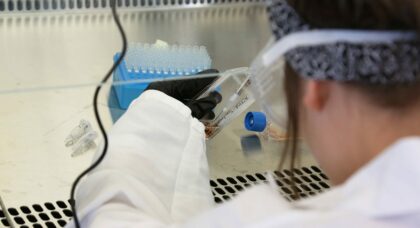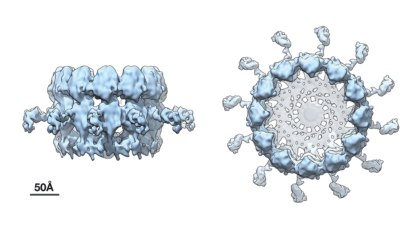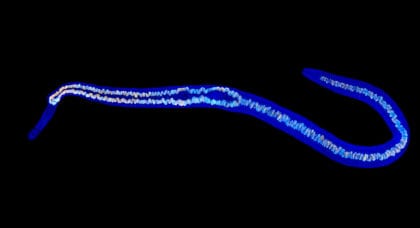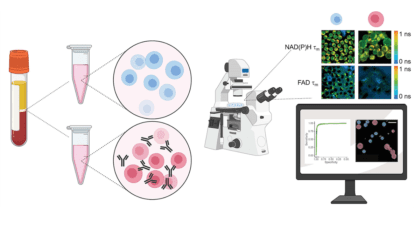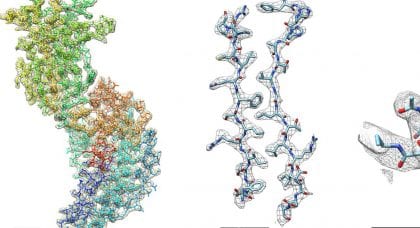A partnership built on trust, nimbleness and flexibility
Some of you may recall a long-running 1990s television commercial series by the chemical company BASF, running under the theme: “We don’t make a lot of the products you buy. We make a lot of products you buy better.”
It was a fairly brilliant approach for a decidedly behind-the-scenes company that focuses on materials science to enhance thousands of everyday products. They don’t make jeans, they make them bluer. They don’t make jets, they make them lighter. They don’t make speedboats, they make them faster.

Brad Schwartz
I’m reminded of this series when I think about the Morgridge Institute’s inspired relationship with the University of Wisconsin–Madison. Morgridge was founded roughly 15 years ago to, in part, bring the benefits of a private research model to a great public research university, helping it move more quickly into uncharted research territory. Our question has become: Like the chemical company, can we serve as a catalyst to make a great biomedical research initiative even better?
Even though we’re a small entity by comparison — 16 lead investigators, about 150 employees — when we do our job right, we punch well above our weight in terms of campus impacts. And also like BASF, we’re comfortable taking a back seat to the university in terms of public recognition.
The Wisconsin cryo-electron microscopy initiative may be our best example yet of how the partnership works. This decade-long effort reached its zenith in 2020 when new UW–Madison biochemistry professor and Morgridge affiliate Elizabeth Wright led the charge to make UW–Madison a national research and training hub for cryo-EM. The National Institutes of Health will provide UW–Madison $22.7 million over five years to bring more scientists into the cryo-EM field, which has the potential to impact every corner of medicine.
But the behind-the-scenes story is quite remarkable. About eight years ago, biochemistry faculty recognized that the university had fallen behind in this important new field, and dramatic steps would be needed to stay competitive. Biochemistry took the clear lead in this effort. Despite the department’s strong financial capabilities, this was going to be too expensive to do entirely on its own. Because of our very early collaboration at the inception of this project, Morgridge became biochemistry’s lead partner and helped secure other campus investors. By 2018, more than $16 million had been committed to core infrastructure around cryo-EM.
That partnership helped attract a superstar like Wright, who came to campus after having built a cryo-EM initiative from scratch at Emory University. She could see the commitment here to being leaders in this field. When NIH saw Wright’s proposal, they actually convinced her to not just to apply for a regional center, but to be the national hub. We had the talent and infrastructure in place to make it happen.
“As the institute was conceptualized by WARF trustees, John and Tashia Morgridge and campus leaders, they recognized the importance of pairing UW–Madison with a private research partner, giving us competitive attributes that many other major research universities — mostly along the coasts — have been enjoying for decades.”
Since Wright’s hire, biochemistry has hired two new cryo-EM faculty and Morgridge added its newest PI — cryo-EM imaging software expert Tim Grant — to the talent pool. We also plugged in expertise from Morgridge’s research computing theme — including Miron Livny and Brian Bockelman — to build a tailored computing infrastructure to support this massive endeavor.
Our flexibility and ability to take reasoned risks came in handy throughout the process. For example, one key component of the microscope was slated to take up to ten months for delivery under university procurement rules. We were able to switch that to a Morgridge expense and get the key component delivered within a month.
None of this would have been possible without the leadership and vision of the Wisconsin Alumni Research Foundation Board of Trustees, along with John and Tashia Morgridge. As the institute was conceptualized, they both recognized the importance of pairing UW–Madison with a private research partner, giving us competitive attributes that many other major research universities — mostly along the coasts — have been enjoying for decades.
As WARF trustees, I hope you take great pride in having the foresight to back this bold initiative for Wisconsin science, and for continuing to help us pursue basic research that will drive the next advances in human health. This report highlights some recent successes — as well as some directional pivots — during our pandemic-altered year.
My best,
Brad Schwartz
CEO, Morgridge Institute for Research
Morgridge scientists seize the moment Researchers work to end COVID-19 pandemic

2020 Milestones
Bringing fluorescence imaging out of the dark
Morgridge Institute spinoff company OnLume had a banner year in 2020, receiving Food and Drug Administration (FDA) approval, meeting its venture funding goals and launching its first clinical trial with a California company. And they are getting expert feedback from UW Health physicians on their groundbreaking fluorescence imaging device.
Beyond Fun: Discovery Outreach strengthening bond between science, society
The Discovery Outreach team is growing an iceberg. The visible part above the water is made up of the tens of thousands of people of all ages who participate in programs each year. And the mass below the surface contains hundreds of Wisconsin scientists, researchers and experts who are adding their voice to science engagement.
Thomson Lab looks to make major health impact with artery engineering project
At the Morgridge Institute, stem cell pioneer James Thomson is leading a potentially transformational project to develop a safe and functional cell-based artificial artery that could be pulled from medical inventories and used by vascular surgeons.
Summer Science Workshop helps students form their science identity
The workshop series, which wrapped up in late July, brought more than 100 students and 15 teachers “face-to-face” to learn online from scientists at the Morgridge Institute for Research.
Advanced Cryo-EM reveals viral RNA replication complex structure in stunning detail
For the first time, scientists at the Morgridge Institute for Research have generated near atomic resolution images of a major viral protein complex responsible for replicating the RNA genome of a member of the positive-strand RNA viruses.
The big gulp: Inside-out protection of parasitic worms against host defenses
A team of developmental biologists at the Morgridge Institute for Research has discovered a means by which schistosomes, parasitic worms that infect more than 200 million people in tropical climates, are able to outfox the host’s immune system.
Overcoming COVID-19 and future pandemics: new tools to control viral threats
In light of the COVID-19 pandemic, Morgridge Investigators Paul Ahlquist and Tony Gitter joined CEO Brad Schwartz in a webinar on June 2nd where they discussed COVID-19 and the broader context of viral pandemics and how we respond to them.
Novel label-free imaging technique brings out the inner light within T cells
A new imaging method developed by the Skala lab uses the natural autofluorescence within cells to assess T cell activity. The technique could help assess T cell involvement in immunotherapies.
National Science Foundation establishes a partnership to advance throughput computing
Morgridge and UW–Madison are partners on a $22.5 million project from the National Science Foundation to advance high-throughput computing technology and promote usage nationwide.
New national imaging center has potential to transform medicine
A national research initiative announced today will place the University of Wisconsin–Madison at the forefront of a revolution in imaging fostered by cryo-electron microscopy and cryo-electron tomography — technologies that can illuminate life at the atomic scale.
Tim Grant: Making sense of cellular machinery
Tim Grant, a cryo-electron microscopy pioneer, joins the Morgridge Institute this month as the newest investigator. Grant joins a growing collaboration at UW–Madison where he will use cryo-EM to help biologists see the structure of molecules within cells.
Third Annual Bioethics Cartooning Contest Winners
Charlotte Kanzler, a first-year graduate student in the UW–Madison Cellular and Molecular Biology program and a member of the Phil Newmark lab at Morgridge, took the top prize in the third annual Ethics Cartooning Contest.




